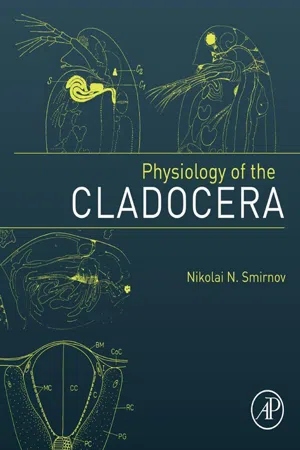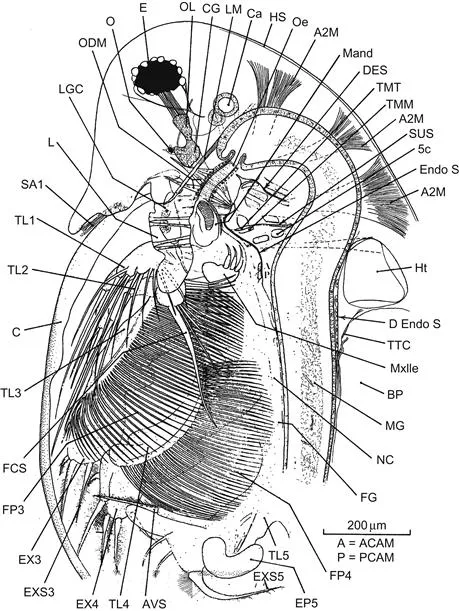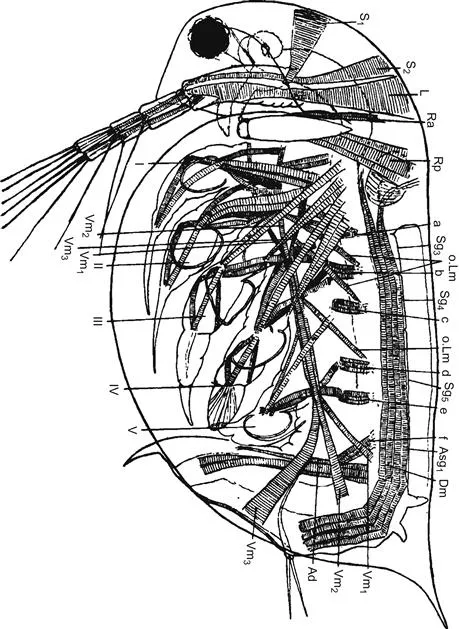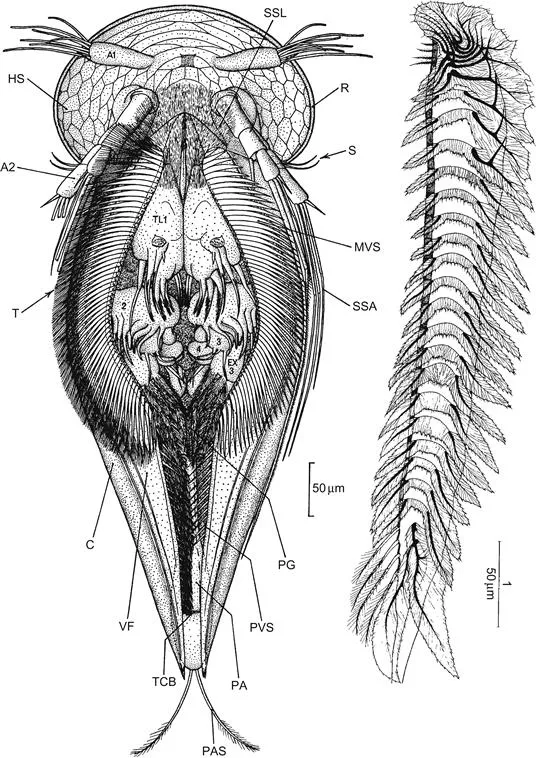
- 352 pages
- English
- ePUB (mobile friendly)
- Available on iOS & Android
Physiology of the Cladocera
About this book
The Physiology of Cladocera is a much-needed summary of foundational information on these increasingly important model organisms. This unique and valuable summary is based on the world's literature, including Russian research not widely available until now. It offers systematically arranged data on the physiology of Cladocera, assisting with explanation of their life and distribution, as well as discussion on directions of future research. Special expert contributions in genetics, immunology, and cytology round out the physiological chapters and provide comprehensive insight into the state of knowledge of Cladocera and its underlying mechanisms.Cladocera crustaceans make up a significant part of the natural communities and biological productivity of fresh waters. In recent decades, they have become globally studied for many purposes, including systematics, genetic, molecular, ecological and evolutionary biology studies. They are also used as "sentinel" organisms for assessing water quality and the environment. In addition, the genome of Daphnia (a genus within Cladocera) was recently sequenced and published, giving this system a much wider exposure. It has also led to a rapidly growing awareness of the importance of understanding physiological processes as they relate to evolutionary and ecological genomics and ecogenomic toxicology.Despite the increasing use of Cladocera in research and study, physiological background information on these creatures is fragmentary. Hundreds of unconnected publications have been accumulated on their physiology, and a synthesis and general representation of the literature has been much needed for the many researchers working with this organism. The Physiology of Cladocera stands alone as a valuable and comprehensive offering in this area for many researchers and students.- Collects and synthesizes from the worldwide literature the state of knowledge of cladoceran physiology- Forward-looking perspective incorporates information from the emerging technological worlds of genomics, cytology, chemical communication, and immunology- Provides foundational information on Cladocera physiology for researchers in various fields, including conservation and evolutionary biology, genomics, ecology, ecotoxicology, and comparative physiology
Frequently asked questions
- Essential is ideal for learners and professionals who enjoy exploring a wide range of subjects. Access the Essential Library with 800,000+ trusted titles and best-sellers across business, personal growth, and the humanities. Includes unlimited reading time and Standard Read Aloud voice.
- Complete: Perfect for advanced learners and researchers needing full, unrestricted access. Unlock 1.4M+ books across hundreds of subjects, including academic and specialized titles. The Complete Plan also includes advanced features like Premium Read Aloud and Research Assistant.
Please note we cannot support devices running on iOS 13 and Android 7 or earlier. Learn more about using the app.
Information
General
Keywords
1.1 Systematic Position
1.2 General Morphological Background

A1, antennule; A2MUS, antennary muscles; AD, apodeme; BP, brood pouch; C, carapace; CG, cerebral ganglion; DAO, dilator muscle of atrium oris; DG, duct of labral glands; DIV, diverticulum; DLM, dorsal longitudinal muscles; DVM, dorsoventral trunk muscles; E, compound eye; EMB, embryo; END, endoskeleton; ENP, endoskeletal plate; FIB, fibrils; HT, heart; K, keel of labrum; L, labrum; LDS, long distal setae of outer distal lobe of trunk limb 1; LGC, labral gland cells; LM, levator muscle of labrum; Mand, mandible; MG, mid-gut; O, ocellus; OCM, esophageal constrictor muscles; ODM, esophageal dilator muscles; PA, postabdominal lamella; RE, rectum; SUS, suspensory ligament; TLS, trunk limbs; TMM, 5c, transverse muscle of mandible; TMT, transverse mandibular tendon; VLM, ventral longitudinal trunk muscles. Source: Fryer (1974).

A, anterior carapax adductor muscle; A2M, antennal muscles; AVS, anterior vertical seta of trunk limb 5; Ca, cecum; D Endo S, dorsal endoskeletal sheet; DES, dorsal extension of ventral endoskeletal sheet; Endo S, endoskeletal sheet; EP5, epipodite of trunk limb 5; EX3, 4, exopod of trunk limbs 3, 4; EXS5, exopod seta 5; FCS, filter-cleaning spine of trunk limb 2; FG, food grove; FP3, gnathobasic filter plate of trunk limb 3; FP4, gnathobasic filter plate of trunk limb 4; Ht, heart; HS, head shield; LGC, labral gland cells; Mxlle, maxillule; NC, nerve cord; Oe, esophagus; OL, optic lobe of cerebral ganglion; P, posterior carapax adductor muscle; SA1, sensory seta of antennule; TL1, 2, 3, 4, 5, trunk limbs 1, 2, 3, 4, 5; TTC, thickened trunk cuticle. For other abbreviations, see Figure 1.1. Source: Fryer (1991).


Right, edge of valve of Scapholeberis mucronata. Left, Graptoleberis testudinaria. A1, antennule; A2, antenna; C, carapace; EX 3, exopod of trunk limb 3; HS, cuticle of head; MVS, medium ventral setae; PA, postabdomen; PAS, Postabdominal seta; PG, posterior gap; PVS, posterior ventral setae; R, thickened rim of head shield; S, Sensory setae of AII; SSA, Swimming setae of AII; SSL, setules of sealing seta of trunk limb 1; TCB, transverse chitinous bar; TL1, trunk limb 1; VF, ventral flange. Sources: right, Dumont and Pensaert (1983); left, Fryer (1968).
Table of contents
- Cover image
- Title page
- Table of Contents
- Front-matter
- Copyright
- Preface
- Contributors
- Acknowledgments
- Chapter 1. General
- Chapter 2. Methods
- Chapter 3. Chemical Composition
- Chapter 4. Nutrition
- Chapter 5. Respiration
- Chapter 6. Circulation
- Chapter 7. Excretion
- Chapter 8. Osmotic Regulation
- Chapter 9. Cell and Tissue Metabolism
- Chapter 10. Growth and Molting
- Chapter 11. Reproduction
- Chapter 12. Locomotion
- Chapter 13. Nervous System and Sense Organs
- Chapter 14. Behavior
- Chapter 15. Ecophysiology
- Chapter 16. A Cytological Perspective
- Chapter 17. Immunology and Immunity
- Chapter 18. The Genomics of Cladoceran Physiology
- Conclusions: Special Traits of Cladoceran Physiology
- References
- Index of Latin Names of Cladocera
- Index of Chemical Substances
- Subject Index